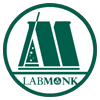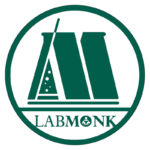[ps2id id=’background’ target=”/]
BACKGROUND
Seizures are one of the complications of drug toxicity commonly antihistaminics and antidepressants due to insufficient inhibitory action (e.g., GABA) or extreme excitation (e.g., glutamate).1 Pentylenetetrazol causes generalized clonic movements by antagonizing the inhibitory GABAnergic transmission which leads to tonic characterized by flexion and extension of limbs.
[ps2id id=’requirements’ target=”/]
REQUIREMENTS
Animals: Rats (150-200 gms) or mice (20-40 gms)
Drugs: Pentylenetetrazol (PTZ) (80 mg/kg) intraperitoneal or subcutaneous route or Picrotoxin (6-7 mg) for convulsion production; Diazepam (1 mg/kg, i.p. route)[ps2id id=’procedure’ target=”/]
PROCEDURE
Divide the animals (rats/mice) into two groups (control and test) each having four animals. Control group will receive normal saline and test group receive diazepam 30 min before PTZ injection. Then inject PTZ and keep the animals for 1 hour observation in individual cages. Seizures are to be evaluated as onset of seizures, number of jerks, onset of clonic, tonic convulsion and recovery or death.2
Observation table.
| Sl. No. |
Group |
Onset time (in sec) |
||||
|
Seizures |
No. of jerks |
Tonic convulsion |
Clonic convulsion |
Recovery or death |
||
| 1 |
Control |
|||||
| 2 | ||||||
| 3 | ||||||
| 4 | ||||||
| 1 |
Diazepam |
|||||
| 2 | ||||||
| 3 | ||||||
| 4 | ||||||
[ps2id id=’conclusion’ target=”/]
CONCLUSION
Drugs which protect chemical induced seizures in animal models are therapeutically active against Petit mal epilepsy. Diazepam showed anticonvulsant effect in chemically induced convulsions.
[ps2id id=’references’ target=”/][ps2id id=’1′ target=”/]
REFERENCES
- Chen H-Y, Albertson TE, Olson KR. Treatment of drug‐induced seizures. Br J Clin Pharmacol. 2016;81(3):412–9.



